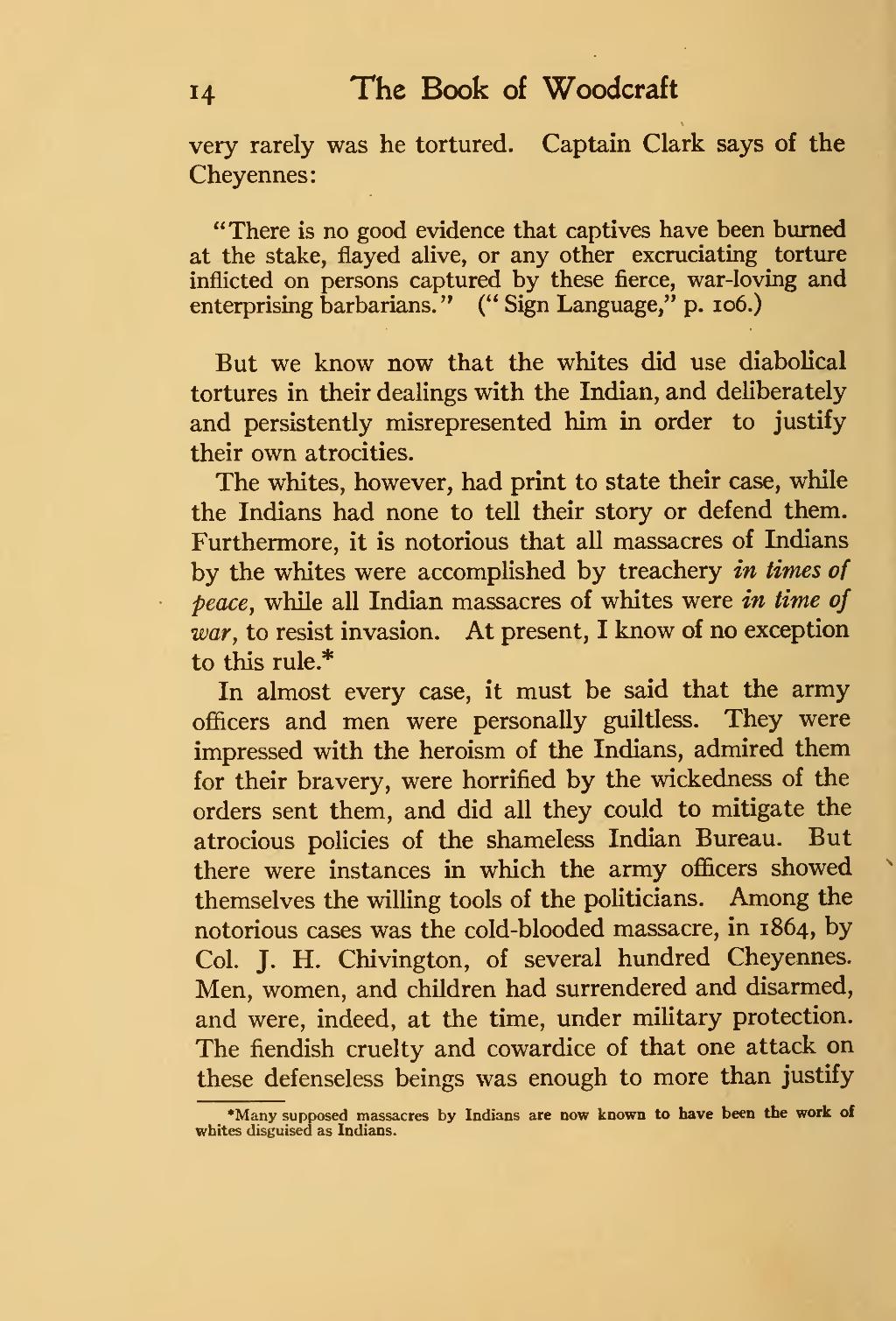Pokračování textu ze strany 45
… very rarely was he tortured. Captain Clark says of the Cheyennes:
“There is no good evidence that captives have been burned at the stake, flayed alive, or any other excruciating torture inflicted on persons captured by these fierce, war-loving and enterprising barbarians.” (“Sign Language,” p. 106.)
But we know now that the whites did use diabolical tortures in their dealings with the Indian, and deliberately and persistently misrepresented him in order to justify their own atrocities.
The whites, however, had print to state their case, while the Indians had none to tell their story or defend them. Furthermore, it is notorious that all massacres of Indians by the whites were accomplished by treachery in times of peace, while all Indian massacres of whites were in time of war, to resist invasion. At present, I know of no exception to this rule.[1]
In almost every case, it must be said that the army officers and men were personally guiltless. They were impressed with the heroism of the Indians, admired them for their bravery, were horrified by the wickedness of the orders sent them, and did all they could to mitigate the atrocious policies of the shameless Indian Bureau. But there were instances in which the army officers showed themselves the willing tools of the politicians. Among the notorious cases was the cold-blooded massacre, in 1864, by Col. J. H. Chivington, of several hundred Cheyennes. Men, women, and children had surrendered and disarmed, and were, indeed, at the time, under military protection. The fiendish cruelty and cowardice of that one attack on these defenseless beings was enough to more than justify ..text pokračuje
- ↑ Many supposed massacres by Indians are now known to have been the work of whites disguised as Indians.
